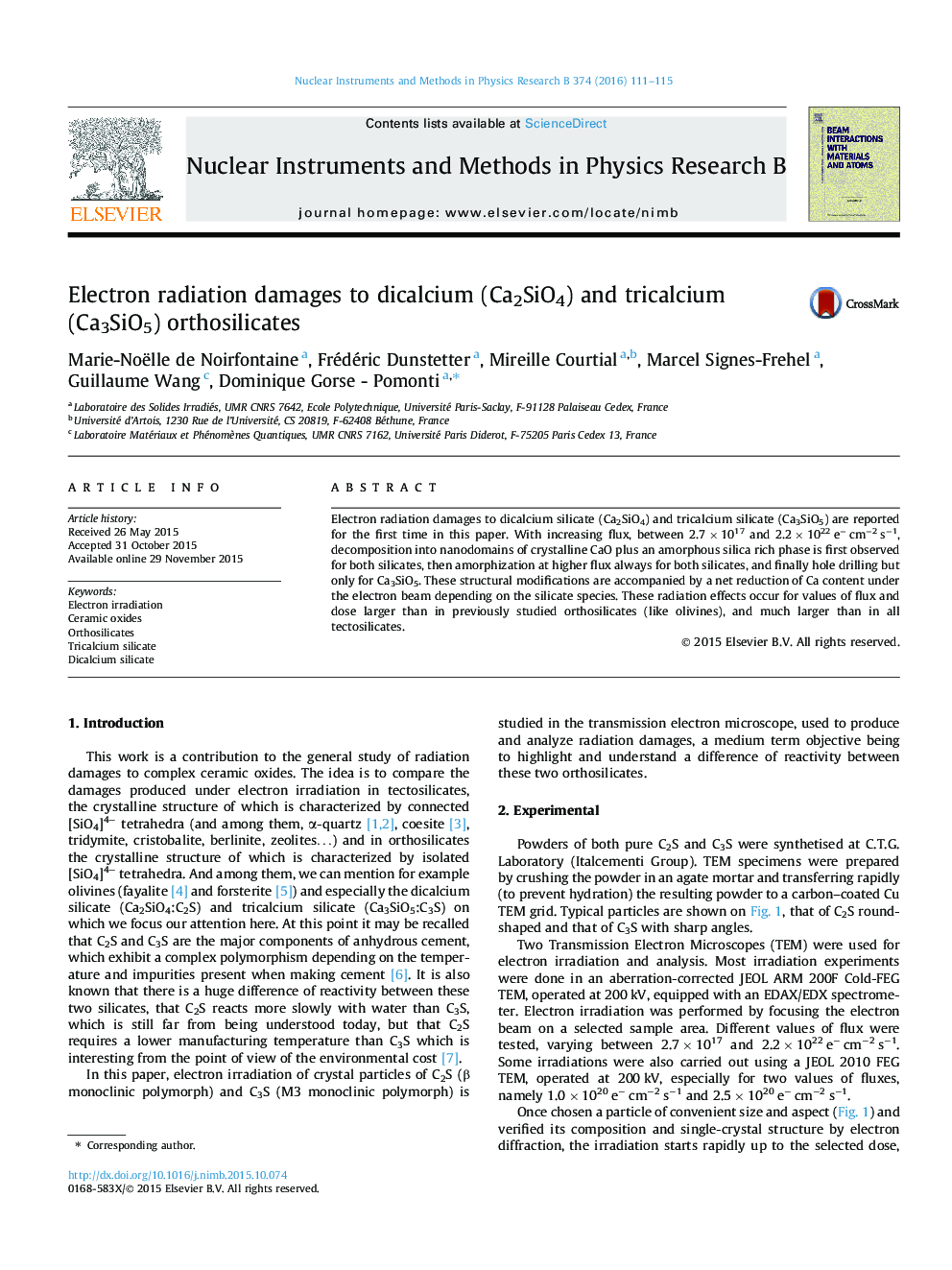| Article ID | Journal | Published Year | Pages | File Type |
|---|---|---|---|---|
| 8039924 | Nuclear Instruments and Methods in Physics Research Section B: Beam Interactions with Materials and Atoms | 2016 | 5 Pages |
Abstract
Electron radiation damages to dicalcium silicate (Ca2SiO4) and tricalcium silicate (Ca3SiO5) are reported for the first time in this paper. With increasing flux, between 2.7 Ã 1017 and 2.2 Ã 1022 eâ cmâ2 sâ1, decomposition into nanodomains of crystalline CaO plus an amorphous silica rich phase is first observed for both silicates, then amorphization at higher flux always for both silicates, and finally hole drilling but only for Ca3SiO5. These structural modifications are accompanied by a net reduction of Ca content under the electron beam depending on the silicate species. These radiation effects occur for values of flux and dose larger than in previously studied orthosilicates (like olivines), and much larger than in all tectosilicates.
Related Topics
Physical Sciences and Engineering
Materials Science
Surfaces, Coatings and Films
Authors
Marie-Noëlle de Noirfontaine, Frédéric Dunstetter, Mireille Courtial, Marcel Signes-Frehel, Guillaume Wang, Dominique Gorse - Pomonti,
